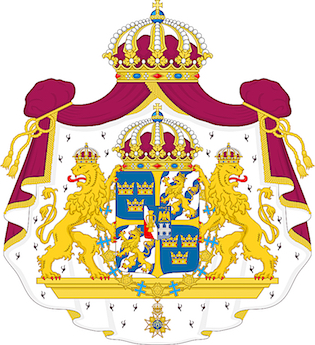Sweden has been a kingdom since ancient times. As early as the 1st century, the Roman historian Tacitus noted that the Suiones (Swedes) had a king. However, the succession of Sweden’s early monarchs, prior to Eric VI (d. 995), is known primarily through Norse sagas rather than reliable historical records.
Initially, the Swedish king held limited powers, serving primarily as a war leader, judge, and priest of the temple at Uppsala. The introduction of Christianity in the 11th century marked a turning point, as it strengthened the monarchy’s authority. Over the following centuries, a gradual consolidation of royal power took place. Traditionally, kings were elected within a royal dynasty at the Mora Stone, where the people had the right to choose or depose their ruler. However, the Mora stones were destroyed around 1515. Sweden became a hereditary monarchy in 1544, when the Riksdag of the Estates at Västerås declared the descendants of Gustav I Vasa as successors to the throne.
Royal authority was initially governed by elements of a written code, the Konungabalk ("Kings' Partition"), which lasted from medieval times until 1734, when a new comprehensive Code replaced it. This reform followed decades of investigation by royal commissions dating back to the reign of Charles IX in the late 16th and early 17th centuries.
The monarchy evolved under various constitutional frameworks. The Instruments of Government of 1634 and subsequent hereditary reforms regulated royal powers until 1719, when Sweden adopted a written constitution limiting the monarchy. The Instruments of Government of 1720 further reduced the king’s authority. This framework was later replaced by the Instruments of Government of 1772, which restored some monarchical powers.
However, Sweden faced significant political and territorial losses, particularly during the Finnish War. On September 17, 1809, the Treaty of Fredrikshamn ceded Finland to Russia. Following this defeat, King Gustav IV Adolf and his descendants were deposed in a coup orchestrated by army officers. His childless uncle ascended the throne as Charles XIII. The Instruments of Government of 1809 ended absolutism, dividing legislative power between the Riksdag of the Estates and the king, while executive power resided with the king in the Council of State.
A major turning point came in 1810, when the Riksdag convened in Örebro to address the succession crisis caused by Charles XIII’s lack of heirs. Jean Baptiste Bernadotte, a Marshal of France and Prince of Pontecorvo, was elected as the legitimate heir. The Bernadotte dynasty has ruled Sweden since 1818, making it one of Europe’s longest-reigning royal families.
The monarchy’s political power diminished over time. With the de facto advent of parliamentarism in 1917, the king’s role became largely symbolic. In 1975, the adoption of new Instruments of Government formally reduced the monarch to a purely ceremonial figure with no political authority.
The current monarch, Carl XVI Gustaf, was born on April 30, 1946, in Stockholm. He is the eldest son of Princess Sibylla and Prince Gustaf Adolf. He ascended to the throne on September 15, 1973, following the death of his grandfather, King Gustaf VI Adolf. Married to Silvia Sommerlath since 1976, the royal couple has three children: Crown Princess Victoria, Prince Carl Philip, and Princess Madeleine.
As the 14th monarch of the Bernadotte dynasty, Carl XVI Gustaf plays an important symbolic and diplomatic role. Renowned as a global ambassador for Sweden, he presents the Nobel Prize annually and promotes Swedish industry and culture on the world stage. By representing brands like Saab, Volvo, and Ikea, the king fulfills a role that Swedes see as vital: being an effective public relations figure for the nation.






